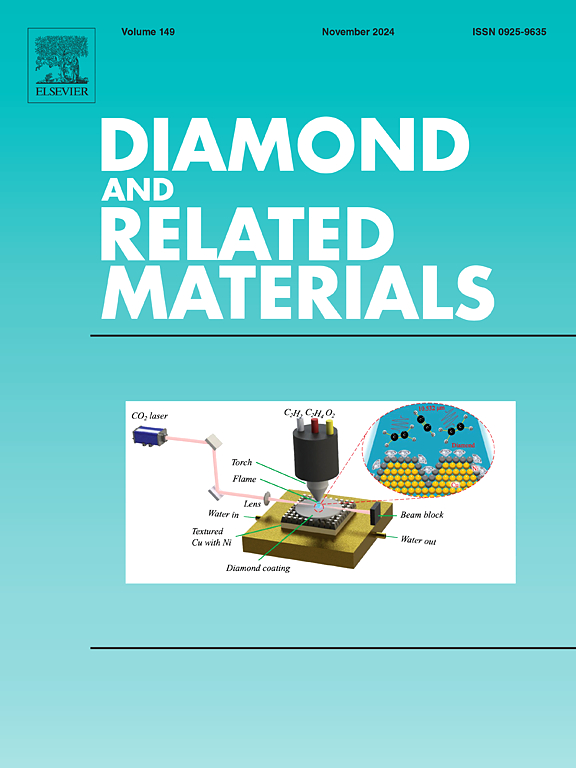推进镍钨/金刚石涂层脉冲刷镀:洞察颗粒掺入和硬度
IF 4.3
3区 材料科学
Q2 MATERIALS SCIENCE, COATINGS & FILMS
引用次数: 0
摘要
采用脉冲电刷镀技术研究了金刚石颗粒与Ni-W镀层的共电沉积工艺。这种方法利用了电刷镀的高灵活性和局部修复能力,同时解决了与颗粒共沉积相关的挑战。本研究系统地考察了刷刷技术、颗粒大小和颗粒浓度对颗粒共沉积行为的影响。对涂层的表面形貌、硬度和附着力进行了评价。研究结果表明,脉冲刷刷比连续刷刷更有效地使金刚石颗粒与Ni-W基体共沉积,从而显著提高硬度。当掺入浓度为40 g/L的1.5 μm颗粒时,测得的硬度最高为939.56±25.93 HV0.1。该样品还表现出优异的粘附性,在大约30 N时发生内聚破坏,没有观察到分层。实验结果表明,脉冲涂刷在增强颗粒掺入和改善涂层力学性能方面非常有效,是一种很有前途的表面工程技术,也是一种需要高耐久性和强度材料的维修技术。本文章由计算机程序翻译,如有差异,请以英文原文为准。
Advancing Ni-W/diamond coatings with pulse-brush plating: Insights into particle incorporation and hardness
This study investigates the co-electrodeposition process of Ni-W coatings with diamond particles using the pulse-brush plating technique. This method leverages the high flexibility and localized repair capabilities of brush plating while addressing the challenges associated with particle co-deposition. This study systematically investigates the influence of the brushing technique, particle size, and particle concentration on particle co-deposition behavior. The surface morphology, hardness, and adhesion properties of the coatings are also evaluated. The findings indicate that pulse-brushing enables diamond particles to co-deposit with the Ni-W matrix more effectively than continuous brushing, leading to a significant increase in hardness. The incorporation of 1.5 μm particles at a concentration of 40 g/L resulted in the highest measured hardness of 939.56 ± 25.93 HV0.1. This sample also exhibited excellent adhesion, with cohesive failure occurring at approximately 30 N and no delamination observed. These experimental results demonstrate that pulse-brushing is highly effective in enhancing particle incorporation and improving the coating's mechanical properties, making it a promising technique for surface engineering and the maintenance of materials requiring high durability and strength.
求助全文
通过发布文献求助,成功后即可免费获取论文全文。
去求助
来源期刊

Diamond and Related Materials
工程技术-材料科学:综合
CiteScore
6.00
自引率
14.60%
发文量
702
审稿时长
2.1 months
期刊介绍:
DRM is a leading international journal that publishes new fundamental and applied research on all forms of diamond, the integration of diamond with other advanced materials and development of technologies exploiting diamond. The synthesis, characterization and processing of single crystal diamond, polycrystalline films, nanodiamond powders and heterostructures with other advanced materials are encouraged topics for technical and review articles. In addition to diamond, the journal publishes manuscripts on the synthesis, characterization and application of other related materials including diamond-like carbons, carbon nanotubes, graphene, and boron and carbon nitrides. Articles are sought on the chemical functionalization of diamond and related materials as well as their use in electrochemistry, energy storage and conversion, chemical and biological sensing, imaging, thermal management, photonic and quantum applications, electron emission and electronic devices.
The International Conference on Diamond and Carbon Materials has evolved into the largest and most well attended forum in the field of diamond, providing a forum to showcase the latest results in the science and technology of diamond and other carbon materials such as carbon nanotubes, graphene, and diamond-like carbon. Run annually in association with Diamond and Related Materials the conference provides junior and established researchers the opportunity to exchange the latest results ranging from fundamental physical and chemical concepts to applied research focusing on the next generation carbon-based devices.
 求助内容:
求助内容: 应助结果提醒方式:
应助结果提醒方式:


